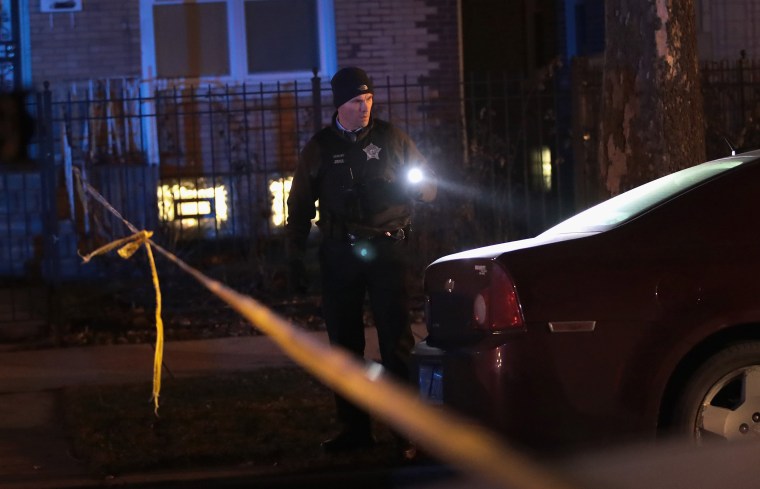In talks with law enforcement officials this week, President Donald Trump offered a misleading view on American crime and police safety that experts say ignored — and could hurt — decades of progress in reducing crime.
The president’s description of an increasingly dangerous America feeds into his campaign narrative that the nation simply needs more “law and order" to be safer. He's argued that police are being mistreated amid a national debate about racial policing after groups like the Black Lives Matter movement demanded police reforms amid a slew of police killings of unarmed black men and women.
Swearing in his top law enforcement official on Thursday morning, Trump said it marked "a new era of justice," while his new Attorney General, Sen. Jeff Sessions vowed to tackle "a dangerous permanent trend that has placed the health and safety of the American people at risk.''
But this picture of America doesn't fit the facts
Trump said Tuesday at the White House that the nation's murder rate is "the highest it's been in 47 years."
It's not. The murder rate ticked up in 2015, but it’s still near historic lows, having fallen by half since its most recent peak in 1991.
“The number of officers shot and killed in the law of duty increased by 56% from the year before,” Trump said at a meeting on Wednesday, citing deadly execution-style killings of police officers in Dallas and New York last year.
That statistic, from a December report by the National Law Enforcement Officers Memorial Fund, signals a shift in the way officers are being killed — with guns — from the previous year, which had a remarkably low number of shooting deaths compared to years past. The actual increase in officer deaths in the line of duty from year to year is far less at 10 percent.
A wider lens look at the crime data he's citing also paints a different picture: It's safer to be a police officer today than it was in 2001 when 241 officers lost their lives in the line of duty, or in 2011 when 177 officers were killed. In 2016, 135 officers were killed in the line of duty. The conservative American Enterprise Institute crunched the numbers and found that gun deaths, when compared against population, makes 2015 the second safest year in history for police.
"The danger is, as you continue to create this dark view of society," John Jay College of Criminal Justice professor Dennis Jay Kenney said, "it becomes a self-fulfilling prophecy."
Kenney, who was a police officer in the 1970s, said Trump's misleading view on crime and safety is dangerous because it's more likely to inflate community and police officers' fears rather than sooth them, which helps to create rifts between the two groups.
"The relationship between the police and community is the single most determinate of police effectiveness," he said, noting that community-based policing and better integration is what drove crime down to its historic low levels in recent years. Trump and Session's rhetoric — simply getting tougher on crime — won't stop crime, he said.
Fordham Law Professor John Pfaff, who teaches criminal law, said Trump misses important context by focusing on large year-over increases instead of historic trends.
“Murders in 2015 experienced their largest single year increase in nearly a half a century,” Trump said Wednesday, speaking to gathered law enforcement officials.
That’s because the American homicide rate is near its lowest point in history after being cut in half from its early peak in the 1990's, Pfaff said.
“We’re a victim of our own success. If you have a hundred homicides and you add ten more, that’s 10% more. If you have ten homicides, and you add ten more, it’s a 100% increases,” he said.
Violent crimes were up 3.9% in 2015, to 1.19 million, but that was still down down dramatically from 1.9 million in 1993.
Pfaff also said FBI crime data, which depends on police reporting to be accurate and for victims to report violent crimes to police, isn’t a perfect picture — so he’ll look at another imperfect measure of crime, the National Crime Victimization Survey, which shows crime dropping even more.
Pfaff said the statistics Trump is citing are notable and important — “we don’t want to ignore that, we want to pay attention” — but noted that they are most valuable in historical context.
“You never want to extrapolate from one bad year. That’s leads to bad policy," he said.

